Review: Microsoft Kin One and Two
May 4, 2010, 11:00 PM by Eric M. Zeman
Microsoft unfurls its Kin One and Kin Two social networking phones, complete with Zune media software. Both phones do one thing fairly well, but fall flat in other areas. Updated with info about battery life, signal, and music syncing.
Form
Is It Your Type?
Microsoft is hoping to appeal to a new kind of user with the Kin One and Kin Two, two phones that are aimed at a younger, more social crowd. The Kin One and Two bear absolutely no resemblance to any phone that has come out of Redmond before. In fact, they are so different, many will be surprised to see the Microsoft logo on the back. Similar to concepts such as Motorola's MOTOBLUR and HTC's Friend Stream, Microsoft (and Verizon) are banking on the highly connected user to adopt this new platform, which puts socialization before all else. In order to focus so keenly on social networking, Microsoft did forsake a few key features.
Body
Disclaimer: Microsoft and Verizon only gave us half a day with the phones before it was time to publish, which isn't enough time for a proper review. That said, we've done our best to cover the basics and key areas, in spite of the extremely short time we've had with the devices. We'll add to and expand this review over the coming days as we spend more time with Kin One and Kin Two. Therefore please consider this first draft to be an extended "first impressions", not a full review just yet.
Kin One
The Kin One is a small, hockey-puck shaped device that is smooth and round. It is very small and features a capacitive display and slide-out QWERTY keyboard. It is very comfortable to hold. Open and closed, it has a great feel in the hand. The plastics don't feel like they are super high-quality materials, though. This was true of the prototypes we saw several weeks ago. We were hoping for an improvement, but there's none. Don't expect highly polished hardware; it feels like the $50 phone that it is.
The slider opens easily, and the keyboard, though tight, feels pretty good. The buttons have a round shape and have good travel and feedback. There's a solid click with each button. I am glad that the keyboard has four rows, which means buttons such as the phone, shift, space, emoticon and search keys have their own space. It does not, however, have a dedicated number row.
The camera button on the side of the phone is nice and large, making it very easy to find and use. The volume rocker is tucked into the top corner of the device, making it both hard to find and hard to use. Thankfully the device comes with a 3.5mm headset jack, which means it can be used with most any pair of stereo headphones.
On the front of the device, there's only one button. Press it once to go back a screen, and press-and-hold to go all the way back to the main screen. This is pretty much the only function of this button. I was rather hoping it would offer some nifty swiping feature, but it doesn't.
Some may find the diminutive size of the Kin One appealing, but I can say it's not for me.
KIN Two
The Kin Two is a much bigger, more well rounded device than the Kin One. It has a much larger screen than the Kin One, and an equally large keyboard. The slide mechanism works well, and the device pops open easily. The build quality of the slide feels strong. I didn't care for the rough sound the Kin Two made sliding open. It feels like there's sand caught in there somewhere, and makes a grinding sound. This sound doesn't get in the way of usability, though.
The keyboard very much reminds me of the first Danger HipTop devices from years ago. The buttons are small, round, but have a comfortable shape to them. Typing with the keyboard is a breeze. I especially liked the travel and feedback of the buttons, which was excellent. It has the same key layout as its smaller brother, including the phone and search keys on the bottom row of the keyboard.
The buttons on the exterior of the device are OK, though we found the same less-than-awesome build quality that we found on the Kin One. The volume rocker is on the side of the Kin Two, which means it's easy to find and use. The camera button, on the right side of the phone, was nearly impossible to use. The front face of the Kin Two is flat, and the side is curved towards the back. The button is placed so far along this curve that it almost feels as though it is on the back surface. You have to hook your finger at a very uncomfortable angle to reach it and use it. Thank goodness there is a software button on the screen that you can use instead.
On the front of the device, there's only one button, which works the same as on the Kin One.
Both phones feel much cheaper than I'd like, and I am also disappointed in overall build quality. The battery covers are both extremely frustrating to remove. In fact, I almost broke the Kin Two in half prying off the battery cover. I expect more from Sharp.
The Three S's
Screen
Kin One: The Kin One's display is a teensy little thing, offering a paltry 240 x 360 pixels. Everything on it seems squished. The Kin are so focused on content, that content pretty much drips over the sides of the kin One's display. I fully admit that I have been spoiled by bigger, better displays than what's available on the Kin One. The pixel density is just low enough that you're going to see some rough edges to text and graphics here and there, but colors looked great. Indoor readability is perfect; outdoors, not so much. Even a cloudy sky made it difficult to use.
Kin Two: The Kin Two's display (320 x 480 pixels) is bigger than the One's, but I can't say that it is any better. The added real estate makes a big difference, however, when it comes to the basic usability and functionality of the Kin Two. In other words, it fits more stuff, and that's a good thing.
Signal
Microsoft and Verizon have tucked the normal status bar info away and out of sight. With both phones, you have to press the clock on the home screen, which opens up a widget with the signal strength indicator, battery level, and alarm clock details. Personally, I want that stuff visible at all times. Why make this stuff so annoying to find, especially when I want to grok it simply by glancing at my screen? However, I can understand the appeal of the added screen real estate.
That said, both devices performed OK in the time that I tested them. They each held onto 3 out of 5 bars most of the time. I never saw either reach up to the full 5 bars, nor did I see them drop to 1 or, worse, to 1X. I made just a few calls, and neither device dropped the calls. Over the course of a week's time, my test units only dropped a single call, and didn't miss any.
Sound
With the volume set up all the way, I easily missed calls with the phone in the same room as me. That means the ringtones are not loud enough. Not by a long shot. Also, every single ringtone and alert noise sounds as if it came from the bowels of a Chelsea nightclub. There's almost no variety, and certainly nothing I'd actually want to use. Just beats, rhythms, and noise.
Phone calls, on the other hand, sounded great. No problems there. In the few test calls I made, I was able to hear people clearly, and they had no complaints about me, either.
Battery
The Kin One and Two are highly connected devices. They are constantly uploading data to Verizon's servers and the Kin Studio. Despite all that neetwork activity, I was consistently able to get two days of battery life out of Kin. Keeping tabs on friends via the SMS, email, Facebook and Twitter software seems to be pretty efficient. I did notice, however, that the more pictures I took, the faster the battery drained (it spends more time uploading to the network). In all, though, battery life is better than many of today's smartphones.
Touch
Both devices have capacitive touch displays. They aren't high-quality displays like the displays on the Droid, Incredible, iPhone, etc., but they get the job done. The screen technology never got in the way of using the devices. The outer casing of the displays is plastic, though, instead of glass. I wish they were made of glass.
There's no on-screen software QWERTY keyboard; not even on the large-screen Kin Two. It's like Android version 0.8 on the original G1. Want to type? You have to use the actual, physical keyboard.
Basics
Calls/Contacts
Calls
The Kin One and Kin Two are the first phones that I can think of that don't allow users to make a phone call from the home screen. The main home screen has no phone-related apps, but a social networking poster board of info instead. Want to make a phone call? You have to swipe to the left first, to get at the phone tools. Adding extra steps to get to the phone is not a good plan in my book. What happens in an emergency and someone unfamiliar with the device needs to make a phone call? They'll have no idea how to do it. That's dangerous.
Once you figure out how to swipe to the main menu, press the big picture of a phone, and you'll be taken to the software dial pad. Once there, dial numbers as normal. If you want to see recent calls, swipe to the right (from the dialer screen). Calls are listed there, and offer options such as dialing missed calls, sending text messages, checking voicemail, etc.
Enter confusion. There's a little software button in the bottom left corner of the screen. It is marked "Recent." This does not mean recent calls. It means recently used apps. It brings up an app switcher that looks very much the same as the one found in Android. It took me all day to stop pressing this button when I wanted to see my recent calls list. Renaming this button would help a lot.
Contacts
The dial pad is for dummies who don't have any real friends. The Kin One and Two are all about social networks, didn't you know? That means Microsoft expects you to have friends. Hence the contacts app, which is much better for making phone calls.
Kin can pull in all the contacts you have stored in various online accounts, including Facebook, MySpace, Gmail, Exchange, etc. That's no problem at all. A few simple steps during set-up and you're good to go. Microsoft expects you to populate the "Favorites" page (which is the third home screen) with all your, er, favorite people. The screen can hold up to 51 faves for the show-offs in the crowd. (Seriously, if 51 people are your "fave" you have problems.)
Interacting with the faves isn't half bad. Press on the little picture of the fave — and a pop-up menu appears. The menu lets you call the contact, text the contact, email the contact or jump in and see all the contact's info. Tools like this are great, especially when you want to contact the same people regularly.
Both Kins can handle a nearly unlimited number of contacts, and the data that can be deposited into each contact includes multiple phone numbers, email addresses, Facebook, Twitter, etc.
Menus
Things get confusing here fast, so lets take it slow.
There are three home screens. The central home screen is a real-time flow of social networking status updates. Think Twitter, Facebook, RSS feeds and MySpace. Any time you pick up the Kin, the first thing you see is what your friends and family are up to. At the tippy top of the screen is your own most recent status update. Press it to share what's on your mind. I do really like that Kin automatically brings in profile pictures with no effort on the users' part. Users can also populate this screen with RSS content, web site info, and so on. It makes for an ever-changing, colorful and dynamic home screen. Microsoft calls this Kin Loop. (As in, you're always in the "loop", get it?)
The screen to the left is the main menu. It's a grid, which is made confusing by crazy shapes and colors. I get the appeal to the design, but in this case form does not trump function. There are twelve main tasks, in two vertical columns of six each. They are Messages, Phone, Email, Browser, Music, Camera, Settings, Alarm, Feed Reader, Search, Contacts and Help. The last two aren't visible, you have to scroll up to see them. Press any of these, and you're taken (eventually) to a sub-menu. Some of the sub-menus have sub-menus of their own. I was surprised by how deep you have to dig to get at some simple stuff, such as the ringtone profiles, or lock screen images, etc. There are a lot of layers, and it takes time to get used to them.
The home screen to the right is dedicated entirely to each user's Faves. Yes, Microsoft is forcing users to dedicate two-thirds of the Kin's home screen space to social networking and contact management. Makes it pretty obvious what Microsoft expects people do to with Kin, no?
A big part of the UI that ties all of these elements together is the Kin Spot. It's the little dot at the center of the Loop (central home screen). See something on the home screen that you want to re-post or share with your contacts? Drag it to the Spot. Once you've dragged content to the Spot, you can do a whole bunch of different things with it, including uploading to Facebook or other services such as SMS, MMS or email. It's a really neat concept.
The one over-riding problem with all of the menus - and the Kin in general - is the slowness of the UI. You could compare it to the first version of webOS that shipped nearly a year ago. Screen transitions are slow and stuttery, apps freeze up every now and then, and the Kin takes forever to react to the simplest of commands.
Messaging
As you may have figured out at this point, the Kin is all about sharing - and that includes via normal channels such as text, email and picture messages.
Kin is all about social networking, and the emphasis there is obvious. Facebook, Twitter and MySpace are all incorporated into the Kin home screen experience. But beauty is only skin deep. Sure, you can see friends' status updates, update your own, and comment on Facebook and Twitter posts, but that's it. No retweeting, no direct messages to Twitter friends. This is just bare-bones social network integration, not full Facebook and Twitter clients. You can't access your own profile, can't accept/search for friends, can't access your chats or Facebook messages, events, etc. You can't interact with your social networking sites in the way you are used to at all. Smartphone platforms, such as BlackBerry, Android, and iPhone, all offer much, much richer Facebook and Twitter experiences. The skin-deep nature of Kin leaves me sorely, bitterly disappointed, and seriously scratching my head. It's hard to understand how a phone so laser-focused on social networking offers a list of social networking features that are years behind the competition, and almost worst-in-class. If you want the full Facebook and/or Twitter experience, look elsewhere.
Text messaging and picture messaging are handled just fine. Microsoft had the good sense to thread everything together, so texts and picture messages all appear in one long stream for any given contact. I think the client is a little clunky, but you get used to it after a few messages.
Email is actually pretty decent. Kin supports most of the major POP3/IMAP4 types, including Gmail, Hotmail, and of course Exchange. Setting up the accounts takes but a few steps, and email can be retrieved at regular intervals. The email software isn't the best I've used, but I suppose I should cut Kin some slack seeing as it isn't a true smartphone platform. It does let you attach pictures.
The Kin don't support any IM clients. Seriously. Not even Windows Live Messenger. Not Facebook chat, nothing.
Kin Studio
Perhaps the coolest aspect of Kin is the web site associated with the phones and what users choose to share. The Studio is an online repository where users can safely keep a backup of all their content, including calls, text messages, emails, contacts, photos, and more. The neatest feature of the studio is the timeline, which lets users jump to any day, week or month in the past to see what they shared and where they shared it. Neat!
Say you want to go back and see what you experienced on May 5. Use the timeline tool to zoom back to that day, and Kin Studio automatically shows users everything they did with their phone on that day. That includes what calls they made/received, messages they sent/received, photos they uploaded (complete with location), and any of the content they shared through their phone.
Data is always being uploaded in the background automatically, so users always have access to a full back-up of their device and settings should they lose or break their device.
This is how all online backup systems should work. Seriously, Android, iPhone, BlackBerry, webOS, are you listening? It really is cool.
Here's a video of how it works:
Extras
Music
Kin is the first phone to proffer a "Zune" music experience. Both phones will ship with a two-week Zune Pass trial, which lets users stream as much music as they wish, and even keep a handful of MP3 tracks for ever and ever. Zune Pass costs $15 per month once the free trial is over.
I am disappointed that Microsoft makes it so hard for Apple users to take full advantage of the Kin One and Two.
First, Zune Pass doesn't work with Macs. Period. Not at all. You need a Windows-based machine in order to use Zune Pass. That means Mac users can't stream music to their devices, which is a shame.
Microsoft offers a client that Mac owners can use to at least side-load their own content onto the Kin. The software can recognize the playlists and photo albums users have built in iTunes and iPhone and transfer content to the phone. It's a shame that there's no Mac compatibility with Zune. This means Mac users can't purchase music directly from their device, or take advantage of some of the Zune-specific software on the device.
As far as the user interface is concerned, it is nearly identical to any Zune media player. Users can control the equalizer, but that's about all the control you have over playback.
I can say with authority that the FM radio works great.
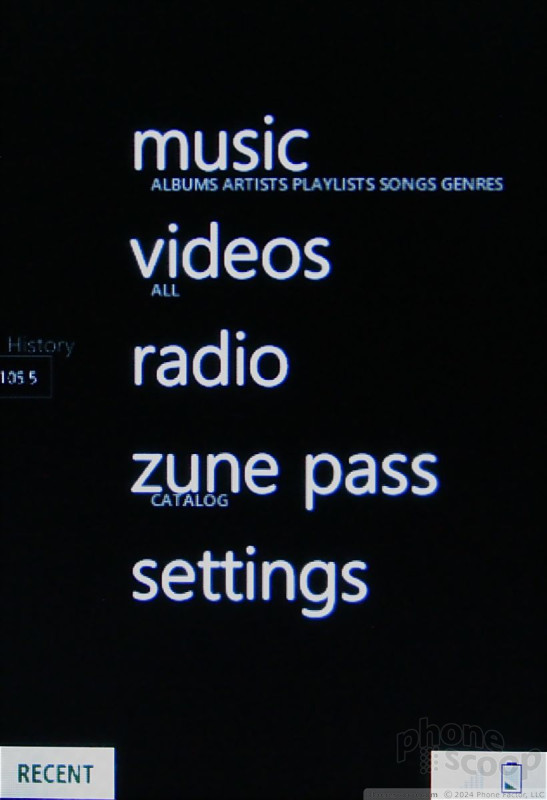
Camera
I've already mentioned how frustrating it is to use the physical camera key on the Kin Two, but what about the camera itself? Well, it's not bad. It suffers from the same faults that all its touch-based brethren do, in that tapping the screen while shooting a picture to alter settings can be a pain in the rear. That said, the Kin's camera works pretty well.
It focuses quickly, shoots pictures quickly, and lets you get back to the business of taking pictures in short order. The settings allow users to adjust resolution, picture quality, flash, geotags and white balance.
As a camera, it behaves on par with the competition. Of course, it also lets users share images instantly via Facebook, email or MMS.
The Video Camera feature works in identical fashion.
The gallery is a simple grid of photos. Users can choose to send them, upload them, or delete them. That's pretty much it. No advanced editing features, and no fancy user interface elements to improve the experience.
Photos/Video
Photos
Pictures taken with the Kin Two's 8-megapixel monster are better than those captured by your average feature phone. In the few shots I managed to squeeze off today, I found the results to be in focus, well balanced, and colorful. As always, outdoor pix turned out better than those taken indoors. You are going to want to use the flash for indoor shots. I am not sure if it qualifies as a flash so much as it does a spotlight. You can illuminate half a night club with the beacon on the Kin. Yeah, it's bright. The pics you capture of your friends on the dance floor won't show off their killer moves so much as it will their squinting eyes. It's possible they'll regain the ability to see by the time the club kicks them out at 3AM.
I'd say users will happily share Kin shots with their kin.
The camera on the Kin One dials down to 5 megapixels. It, too, performs well. It is just as fast as its bigger bother, and I could not detect any differences in image quality when comparing photos side by side.
Note: We were unable to offload full resolution photos from the Kin Two. Sending them via email and/or MMS compressed the images, so these aren't full quality.
Videos
Same for videos. Be careful, though, to set the video camera to the "email" setting if you want to be able to send them anywhere via the wireless networks. If you forget, and record stuff in HD, you'll only be able to transfer it by connecting to a PC. Our device hadn't performed the background sync to Kin Studio yet, so we can't say if it will upload video — HD or otherwise — to Studio.
Browse/Customize
Browser
The Kin's browser performs worse than the browser on most Verizon Wireless feature phones. That's saying a lot. It may be connected to Verizon's EVDO Rev. A network, but I know snails that move faster. According to Microsoft, it is the "Zune HD" browser. It does weird stuff with web site formatting, offers very few and hard-to-locate navigation features, and lets you do only the most basic surfing. It defaults to finding mobile web sites rather than HTML sites, but I was able to at least trick it into loading the HTML version of PhoneScoop.com. Really, the browser is an embarrassment. I honestly can't think of anything nice to write about it, or I'd share it with you.
Customizing
There are no wallpapers or screen savers. Users can alter the theme of the device, but that really only applies to the overall color scheme. When you alter the theme, you have to restart the phone. (!!!)
There are several dozen ringtones, but they are all variations on the same theme. If you like variety, you're screwed. Were I forced to use this phone, I'd put it on vibrate and ignore the ringtones completely. There's not even a lame "old fashioned phone" ringtone. C'mon, throw me a bone, Microsoft! But hey, I am not the target demographic for this phone, and the ringtones might work for you.
Extras
Normally, this page is reserved for all the cool, extra features that a phone has. With Kin, there are none. Instead, I offer you a list of what the Kin doesn't have.
Mapping software or any form of navigation.
A calendar.
A calculator. Or a tip calculator.
A to-do list.
Voice notes. Hell, voice "anything."
A dedicated Bing search app for the web. (You can search the phone for contacts and apps, and Bing search is built into the clunky browser.)
Any sort of weather app or widget.
Verizon-branded services of any kind.
No games.
No voice dialing.
No YouTube.
NO APPS. None. No app store, no app widgets, nothing.
Bluetooth
The Kins do have Bluetooth. I was able to pair both phones with mono and stereo headsets. Bluetooth worked fine on both models. I had no problems at all. Sound quality was better on the Kin One through mono headsets, but otherwise they were on par.
Wrap-Up
Quite frankly, I haven't been this disappointed in a phone in a long time. The list of complaints and missteps far outweighs the positives this time around.
The basic concept of a phone focused on social networking is not new, and has been done better by others (Motorola, Palm, HTC). The Kin Loop and Kin Spot are neat concepts, no doubt, but the execution falls far, far short of what others have been able to accomplish. The skin-deep nature of how social networking has been implemented on Kin is so painful, I can hardly imagine applying the term "social networking" to these devices.
The cameras behave well, and take good pictures, but sharing options are limited to SMS, email and Facebook. The Zune software and media player are sure to make those who use Microsoft computers happy, but Mac users are left out in the cold, somewhat.
I like the way the Faves contacts page works, and integrates with the calling, SMS and emailing programs. The lack of IM support is surprising, though.
Kin only offer half the features of a dumbphone. Kin version 1.0 showcases Microsoft's laziness. They came up with some innovative user interface ideas, but didn't follow through and make a useful phone or device.
What's even more troubling are the costs involved with the Kin. Not including the device prices, Verizon Wireless is demanding a $40/mo voice plan and a $30/mo data plan. That's the same as any smartphone on Verizon's network. The cost of the device is nearly negligible. Verizon customers would be much better off with a Palm Pre Plus, which costs $30, (or a dozen other smartphones) and offers much more functionality.
Microsoft is a software company. That's why I am so surprised at how poor this software is. You may find the Kin offers just the right amount of features. Personally, I wouldn't recommend it to any of my friends or family members.
Comments
Is this really that surprising?
rafster said:
Is it really that surprising that MS bombed on hardware and software for a device? Look at the XBox and 360....
Yeah? And?
There's nothing wrong with the Xbox.
Laughably bad- this doesn't bode well for WM7 either.
Honestly this is just friggin pathetic. No offense Microsoft, but your products are so bad that Windows 7 was considered a "massive improvement."
bluecoyote said:...
WM7 is supposed to be "super tightly integrated" with social networking too. Let's hope it's significantly better than this.
Honestly this is just friggin pathetic. No offense Microsoft, but your products are so
(continues)


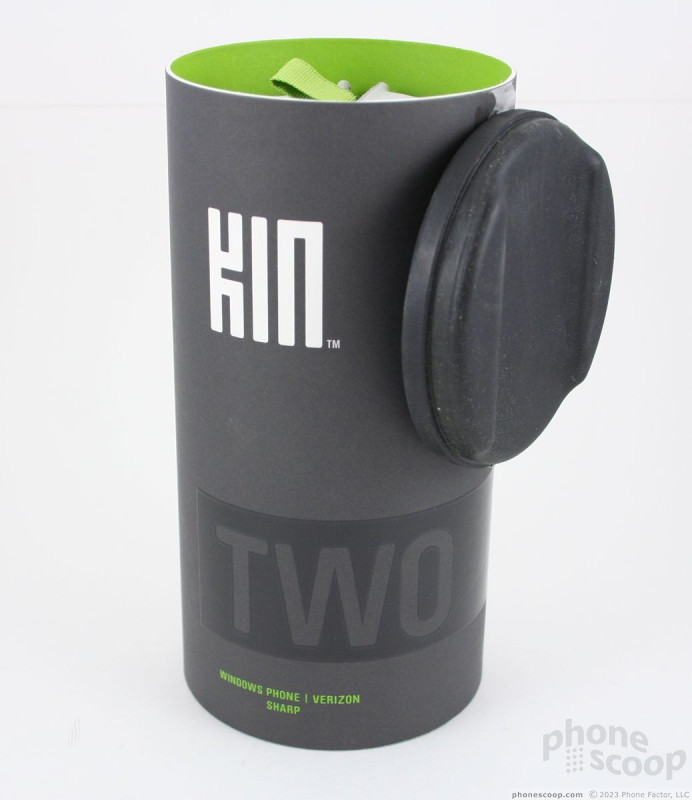



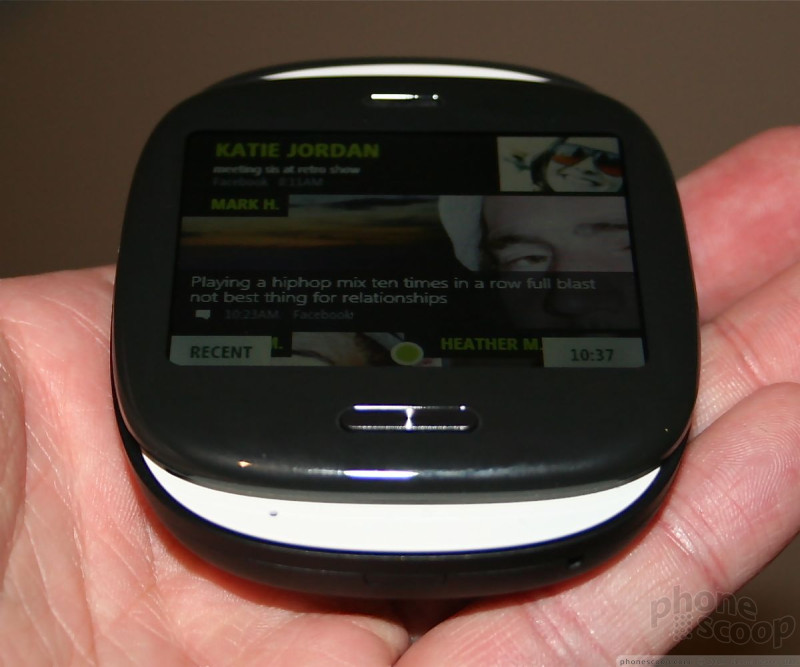





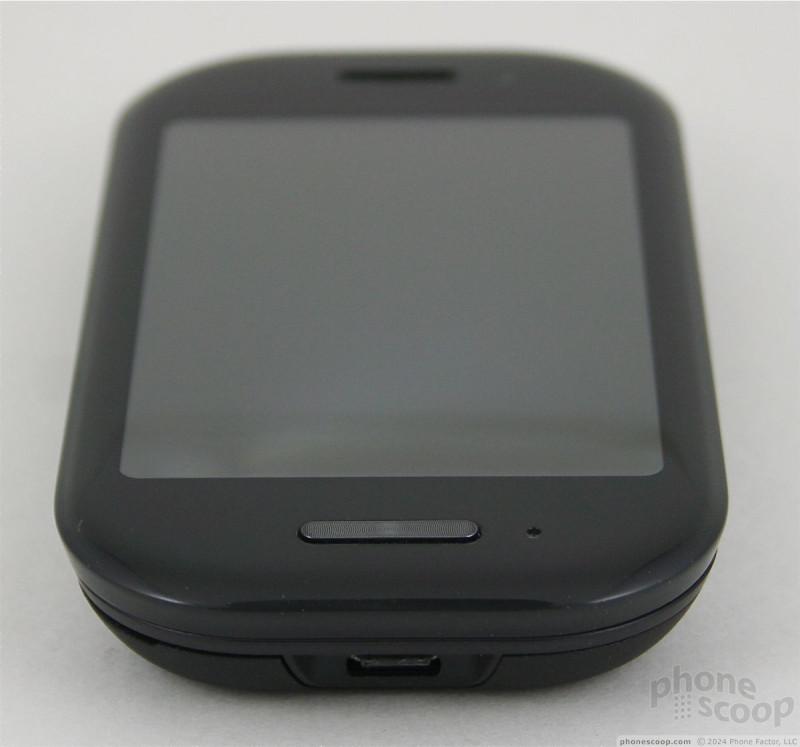









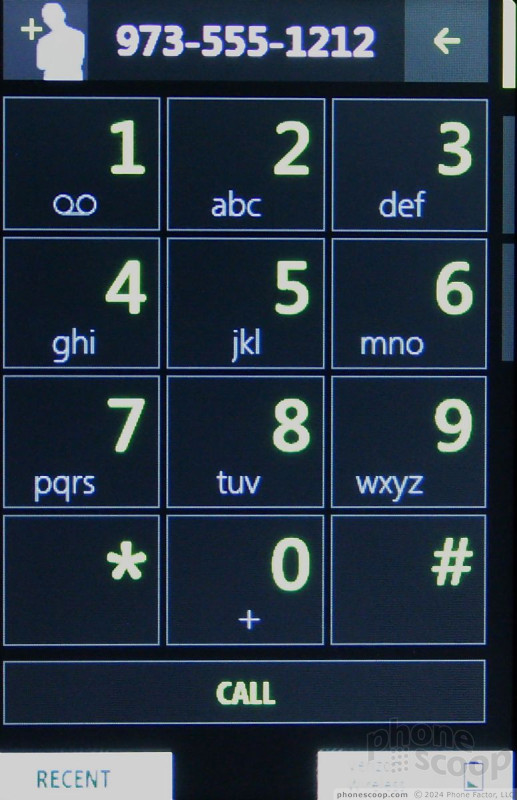





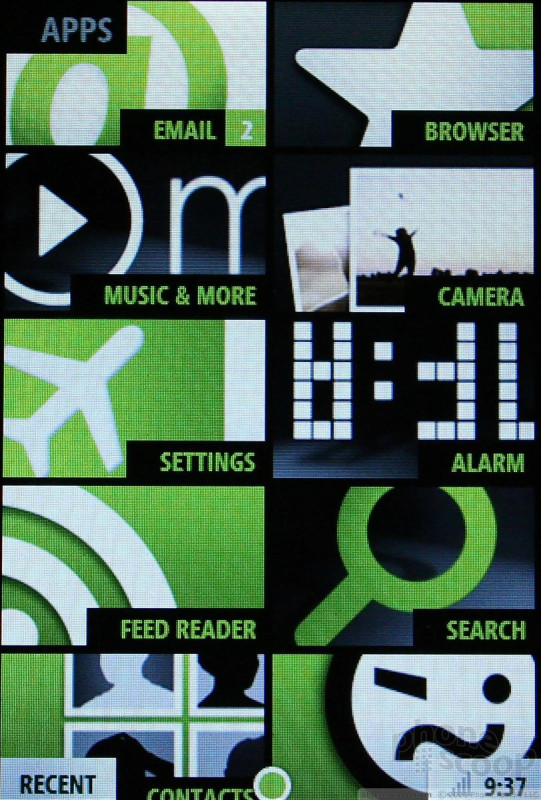





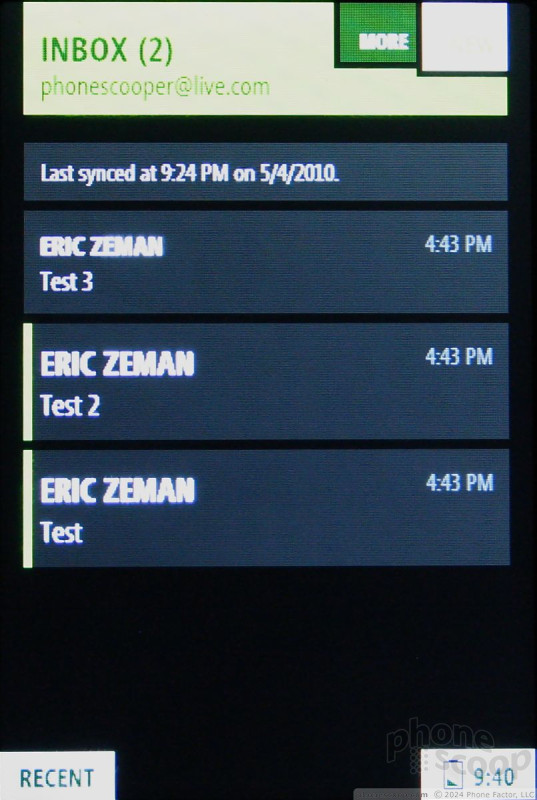






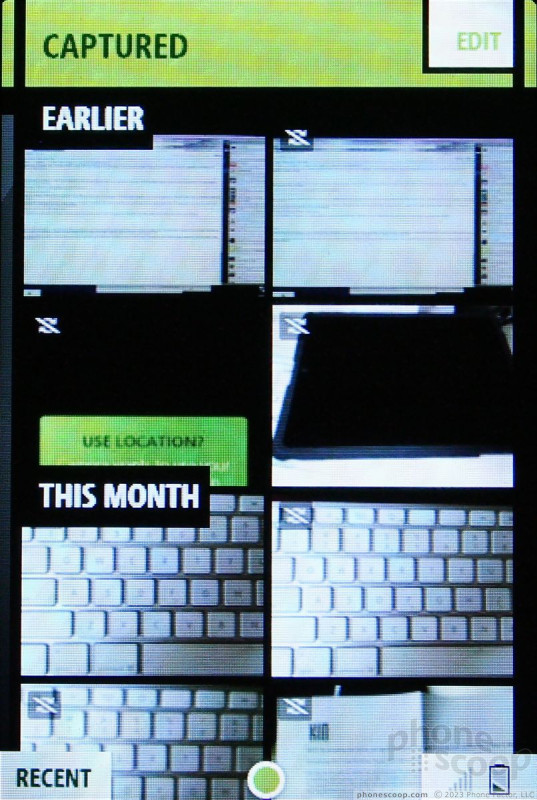








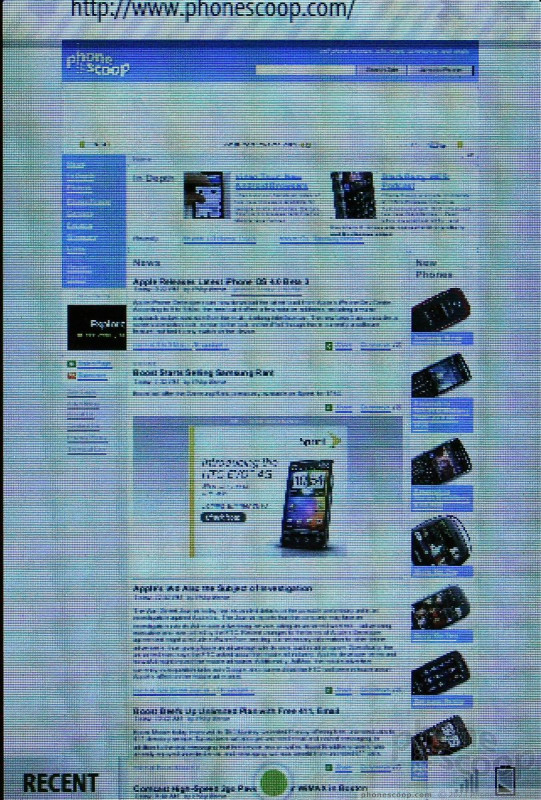


 Review: Kin Two
Review: Kin Two
 iPhone 15 Series Goes All-In on USB-C and Dynamic Island
iPhone 15 Series Goes All-In on USB-C and Dynamic Island
 Samsung S24 Series Adds More AI, Updates the Hardware
Samsung S24 Series Adds More AI, Updates the Hardware
 iPhone 16 Brings More Features to All Price Points, Including New Camera Control
iPhone 16 Brings More Features to All Price Points, Including New Camera Control
 Samsung Puts its Best Camera Yet in the Galaxy S23 Ultra
Samsung Puts its Best Camera Yet in the Galaxy S23 Ultra
 Sharp Kin One
Sharp Kin One
 Sharp Kin Two
Sharp Kin Two







